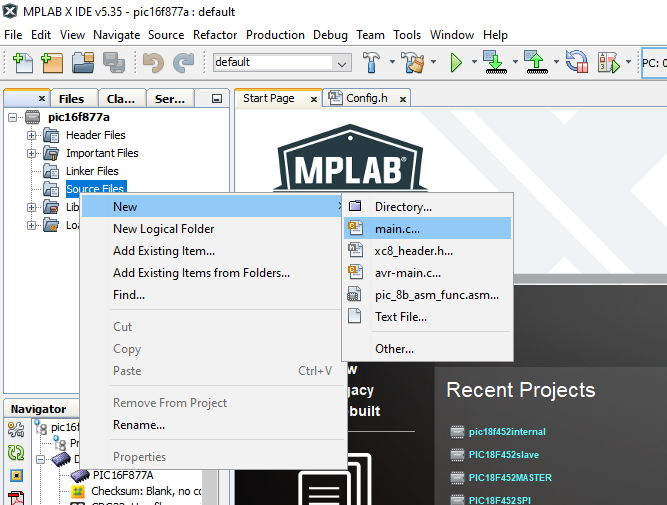
After that send configuration commands to select mode and other configuration settings.Define PIC18F4450 pin that we want to use for sending commands and data to LCD.But due to the efficient use of MCU pins, we will be using 4-bit Mode.
Mplab xc8 typedef bit code#
Although, you can use see code with other Pic microcontrollers also.Īs we mentioned earlier, we can use the 8-bit mode and 4-bit mode interfacing.
Mplab xc8 typedef bit how to#
In this section, we will see how to write example code for 16×2 LCD interfacing with PIC18F4550 microcontroller. LCD Interfacing Programming MPLAB XC8 Compiler
Mplab xc8 typedef bit pro#
In the contrary, MikroC Pro provides libraries for all modules such as LCD, Keypad, ADC Module, UART module. Because the XC8 compiler does not provide built-in libraries. In the case of MPLAB XC8, we will develop our own LCD library. For MikroC Pro for PIC, we will use the PIC16F877A microcontroller. In this tutorial, we will use two pic microcontroller compilers for programming:įor MPLAB XC8 Compiler, we will use the PIC18F4550 microcontroller. PIC Microcontroller LCD Interfacing Programming This contrast register makes adjust to the voltage applied on the VEE pin. Therefore, if you are not able to see anything on LCD after programming, the maximum changes are that you need to adjust contrast with the variable resistor. However, it doesn’t make any major difference.Ī variable resistor is used to adjust the contrast of 5×8 dot pixels according to background light. The only difference between 4-bit and 8-bit is that data transfer speed is faster for 8-bit mode. Therefore, it is recommended to use 4-bit mode interfacing. On the other hand, if we use 4-bit mode, we need only 6 GPIO pins. So It is recommended to use LCD in four bits mode to save pins of the microcontroller for other applications.Īs you can see in this diagram, if we use 8-bit mode interfacing, we will need to use 11 pins of pic microcontroller. In this tutorial, we have used the 4-bit mode which uses only 4 data lines, thus saving pins of the microcontroller. It can work in two modes, 4-bit and 8-bit. Its pin configuration is given as follows: Pin Number Name Use 1 Vss Ground 2 Vdd Power 3 Vee To adjust the contrast 4 RS 1=Data inputĠ=Instruction input 5 R/W 1=Read from LCDĠ=Write to LCD 6 Enable (EN) From 1 to 0 = Data is written to the LCD 7 DB0 Data Bus Lines 8 DB1 9 DB2 10 DB3 11 DB4 12 DB5 13 DB6 14 DB7 15 LED+ Backlight 16 LED- How to interface/Connect LCD with PIC Microcontroller LED+ and LED- pins are used to control the backlight LED. There are 8 data pins from D0-D7 and three control pins such as RS, RW, and E. Now let’s first understand the pinout diagram and commands of 16×2 Liquid Crystal display.




 0 kommentar(er)
0 kommentar(er)
